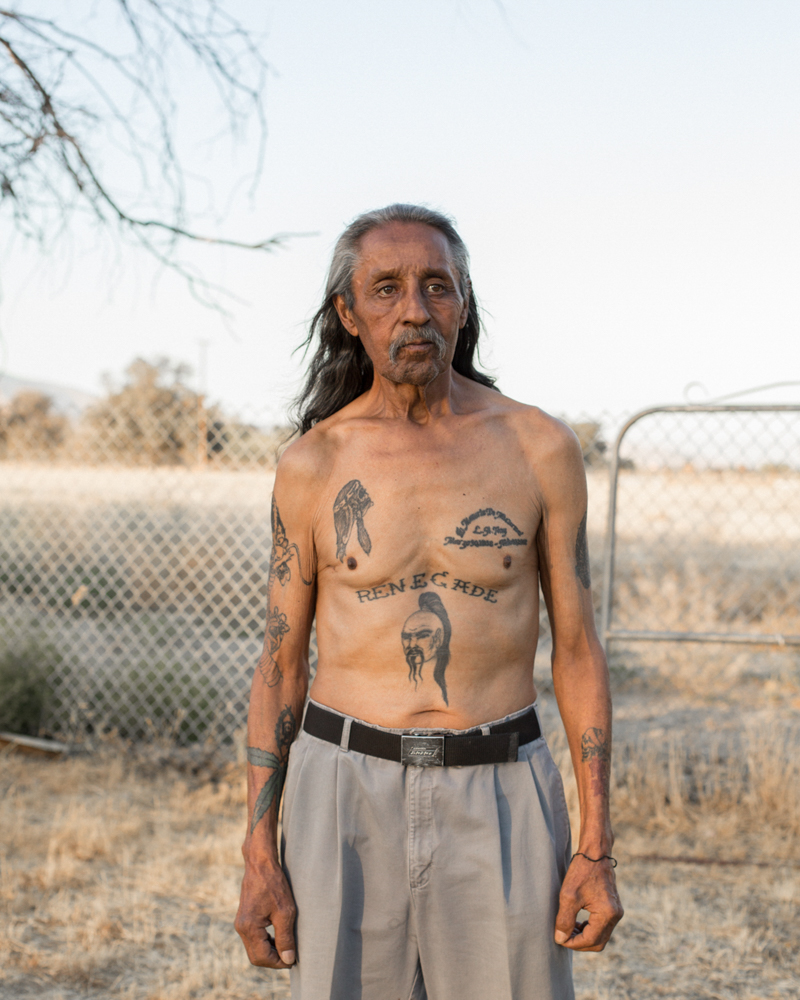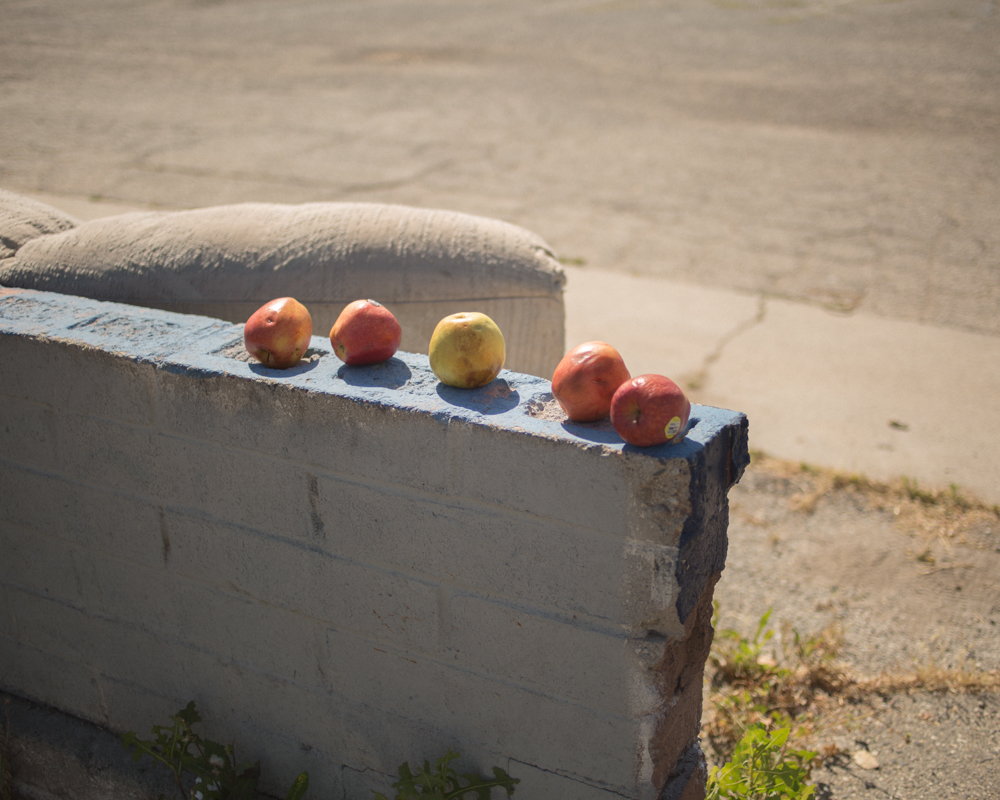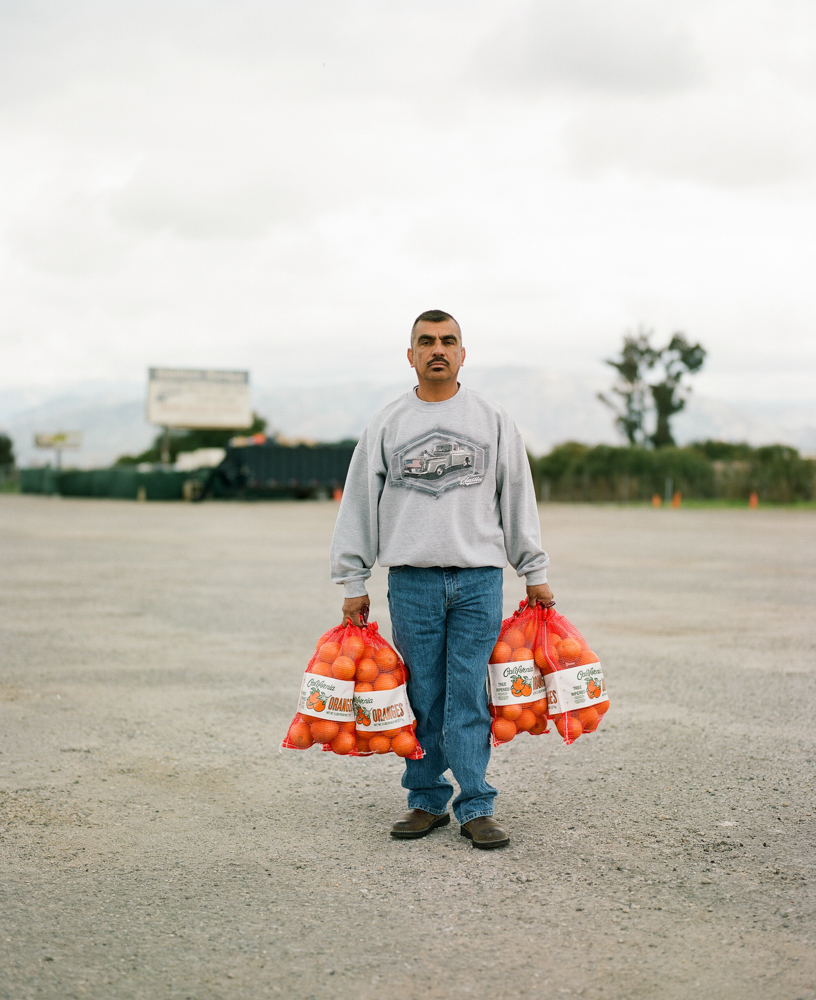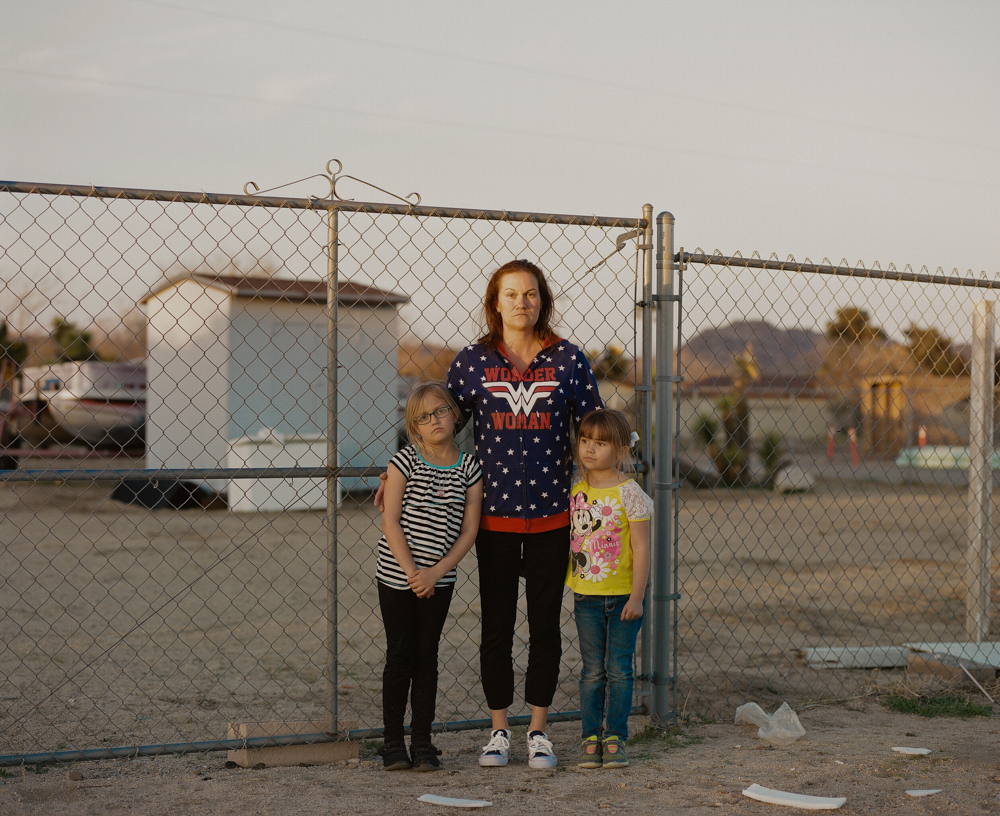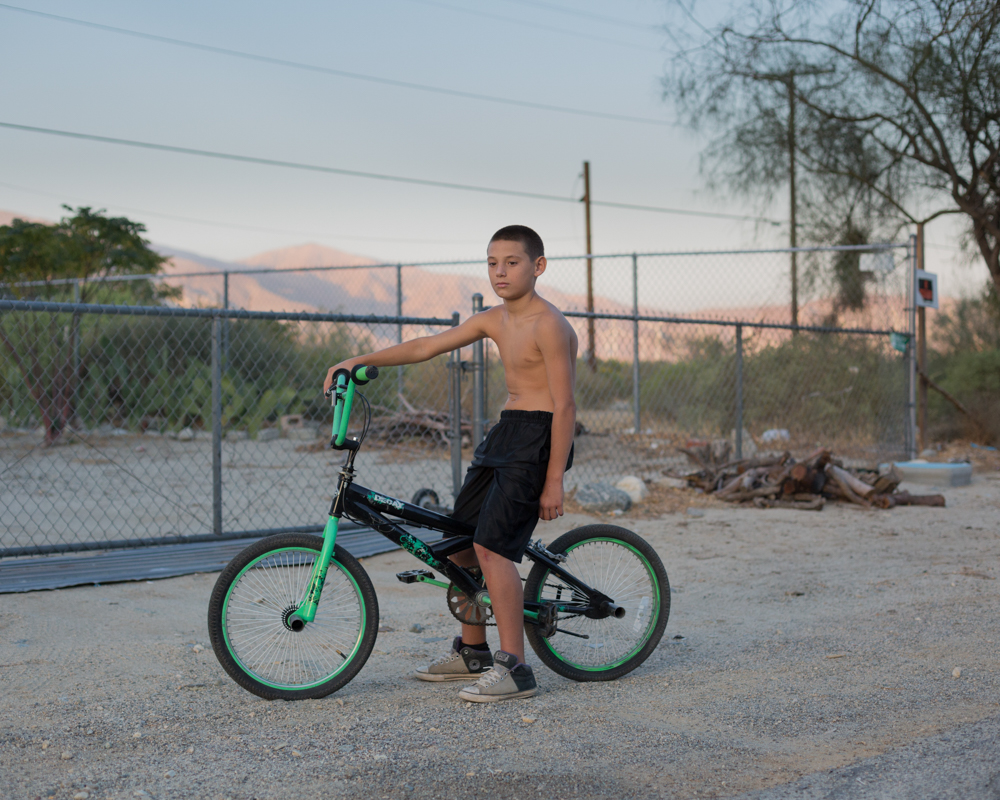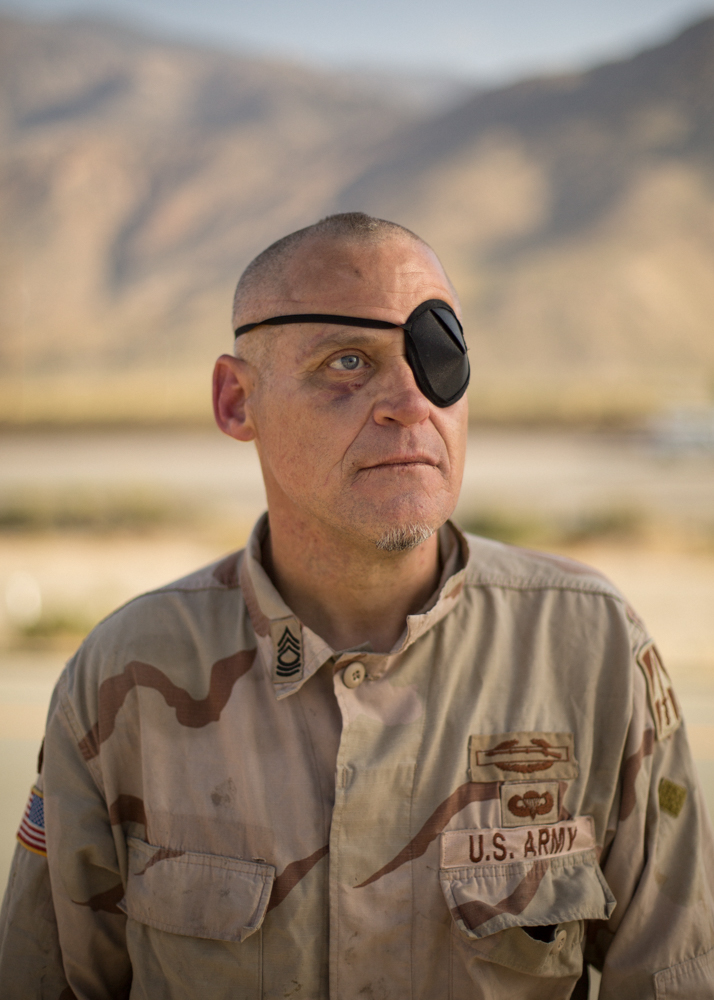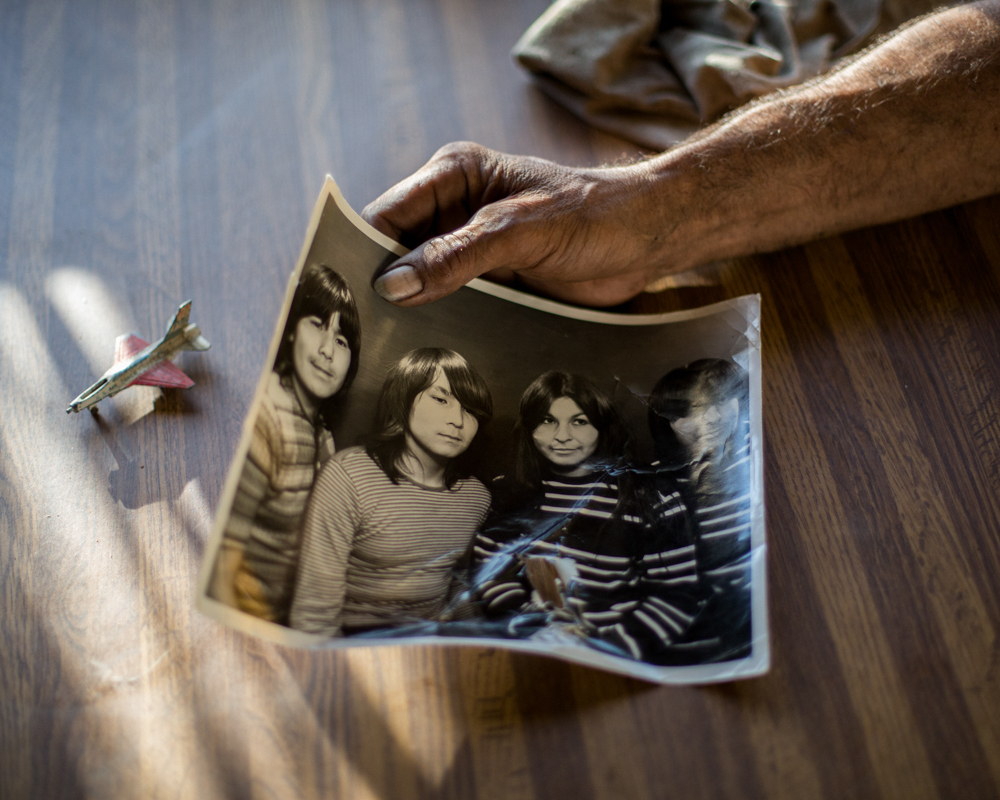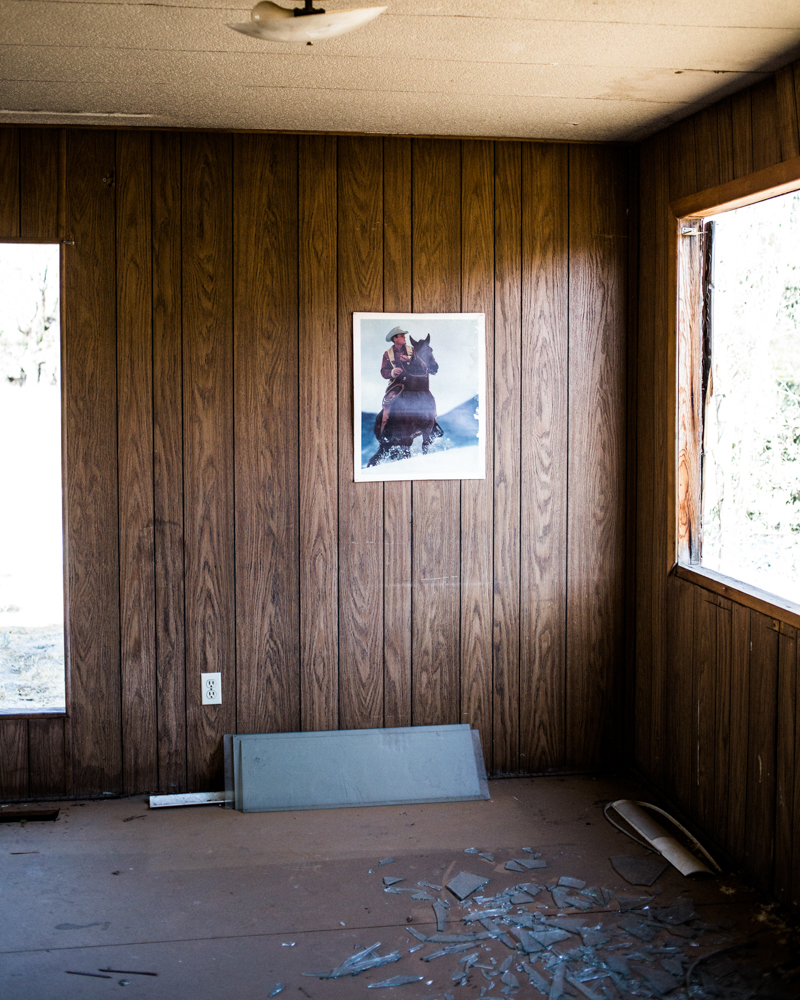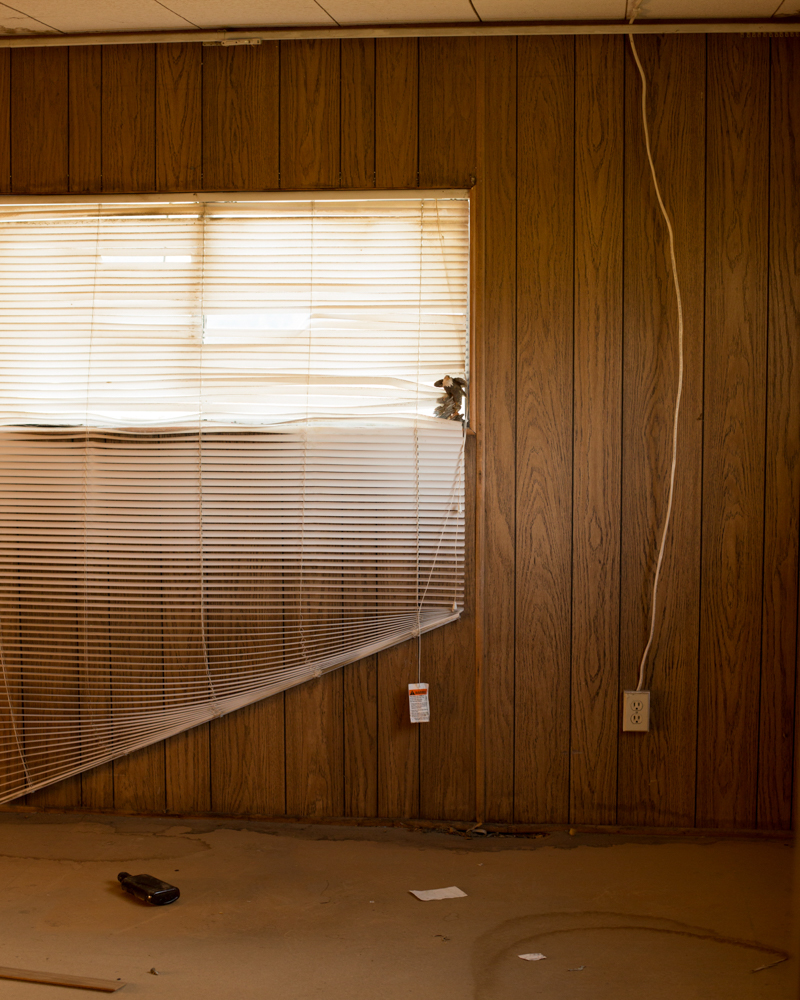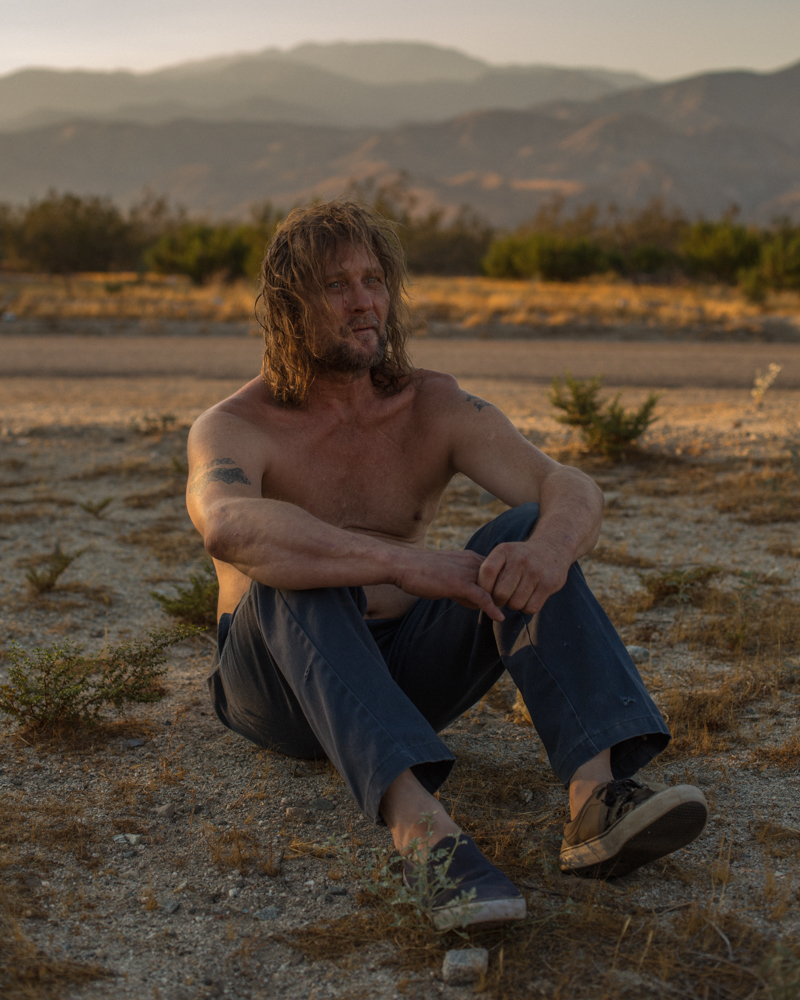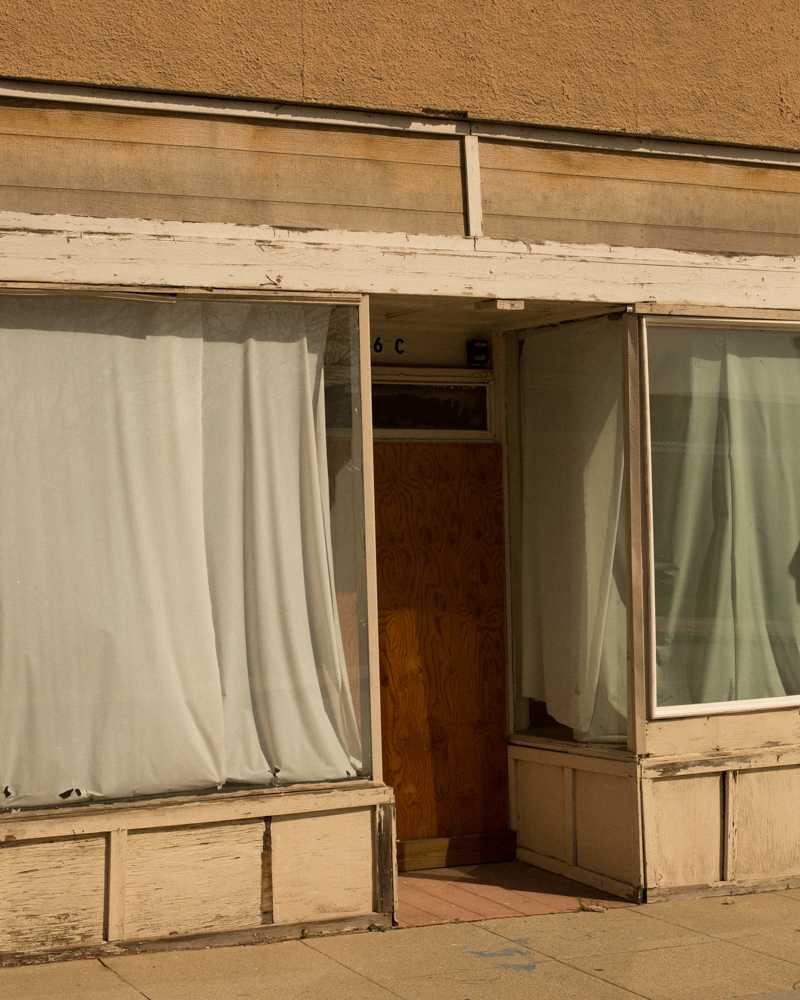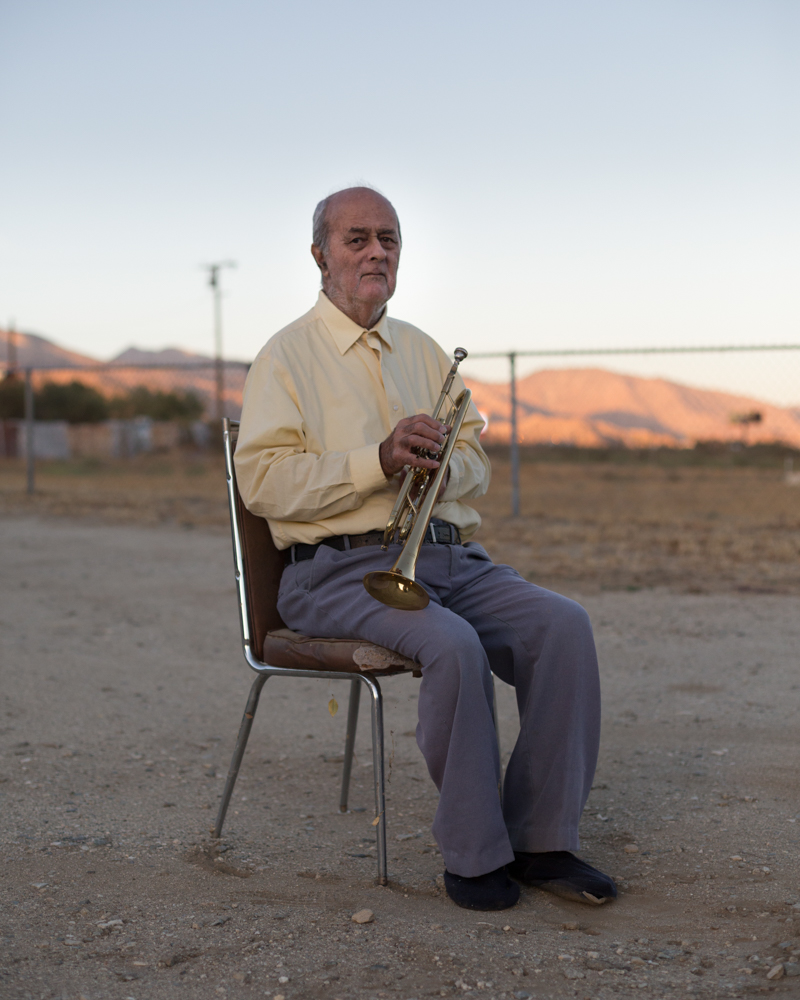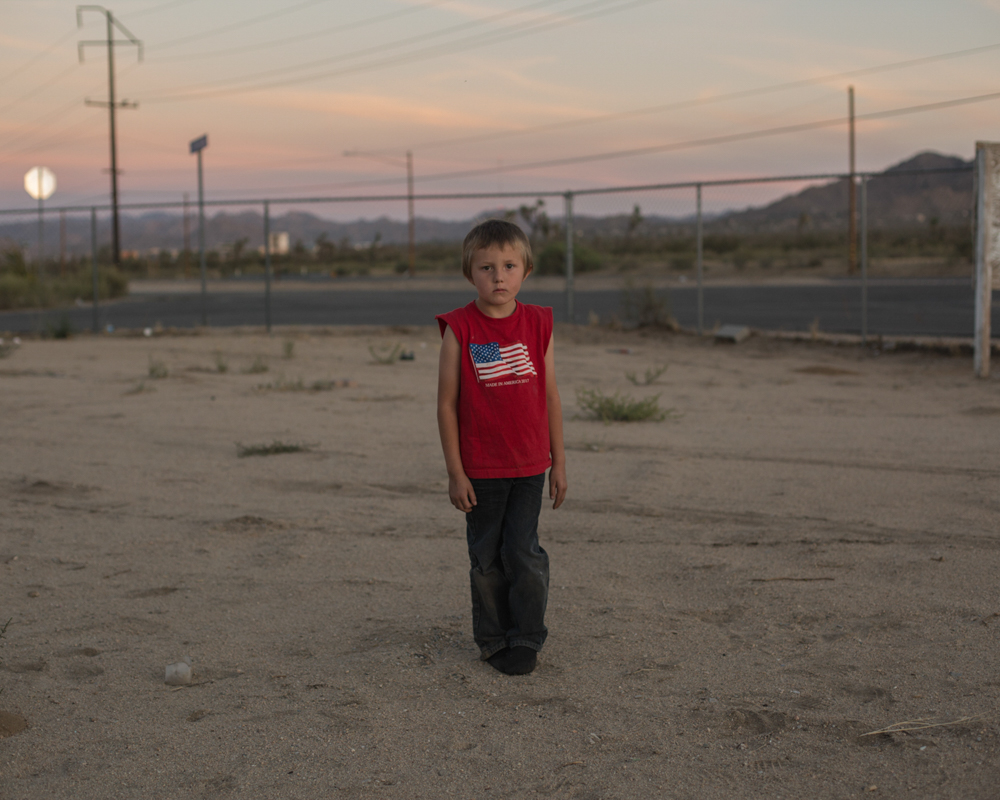Kovi Konowiecki: Storytellers
“Glory to the hawks and their awing ways, moderate, and high.” These are the last words uttered in Kovi Konowiecki’s poem named for his series of photos, The Hawks Come Up Before the Sun. The images that follow feel like isolated chapters bound by the geography of the California desert and a tangled web human relationships. Konowiecki who originally hails from Long Beach, CA, is an outsider to this place of arid vastness and solitude. Yet, his empathetic eye and ability to conjure nuance and narrative from a series of single and at times disparate images might convince you otherwise. Rather than a statement, these sunsoaked depictions feel like the exploration of a place as internal as it is tangible. A myriad of quiet encounters elevated by the camera amidst an expanse of dusky brush and cracked highway.
Kovi Konowiecki (b.1992) was born in Long Beach, California, and is currently based between Long Beach and Mexico City. He holds a BA in Media Communications from Wake Forest University and an MA in Photography from University of the Arts London. After playing professional soccer in Europe, he turned to photography as a way to document the things around him and shed light on different aspects of his identity. Kovi was selected to be a part for the Taylor Wessing Photographic Portrait Prize in 2016, 2018 and 2019, and was the first ever nominee to have two images shortlisted for the first place prize. He also also been featured and published on platforms such as The New Yorker, British Journal of Photography, i-D, The Guardian and The California Sunday Magazine, amongst many others. Kovi has exhibited his work in galleries and museums such as ROSEGALLERY (Santa Monica, CA) and The National Portrait Gallery in London. In 2018, Kovi cofounded a small publication, Mula Press, to explore his love for book making and to publish personal projects and special artist editions. Kovi is working on his first monograph with Deadbeat Club Press, which is set to release in Fall 2020.
The Hawks Come Up Before the Sun
The desert valley where the fog splits the ridge:
above the hidden hawks fly,
and the people,
Below. It reminds man that unconditional access
to the world is not granted; the pearl end of the skies
unreachable.
But sometimes the sun jars through and gives glory to the hawks.
Fathers point fingers at the dazzling sky-dwellers
as if they were as rare as stars.
Trailers and truckloads of fathers and sons come to cherish
the life of birds—see them float on the whims of the
wind,
play through the tips of trees and chisel the San Jacintos.
These are simple, beautiful things
that can stop the earth-delving jaunt of man.
Glory to the hawks and their awing ways,
moderate,
and high.
The photographs in The Hawks Come Up Before the Sun were taken between 2016 and 2020 in Riverside County and the western side of the California desert, particularly small pockets and communities tucked behind the Morongo Reservation. Some of the individuals portrayed in the project live life wandering without a permanent home. Many live isolated lives, communicating with as few people as possible, and doing just enough to get through the harsh desert conditions of the everyday.
The right to capture the subjects in many of these photographs was given in exchange for a pack of cigarettes or a liter of soda from the local Country Mart liquor store. While making these photographs, I was introduced to things that were altogether unfamiliar to me: bible study, fruit orchards, arsonists, stories of abandoned twin brothers. I became close to those who have come to be known in those parts as the “black eyes”. I constantly ask myself what drew me back to the desert. Perhaps it is the geography—the feeling of vast openness after all my city years. Or maybe it is the people that seem to care about nothing except for what is directly in front of them—the ability to fit every serious thing into so much less. Or maybe it is the conversation between the people and the land—how they speak to each other about freedom and hope.
You mention in your bio that before arriving at photography you played soccer professionally. I’m always curious how photographer’s lives prior to engaging with the medium helped shape their current artistic practice. Are there lessons you learned as a pro athlete that translate to the photo making process?
Although playing soccer is quite different than making photographs, they both have served as a source of distraction at different points in my life. It is quite ironic actually. I used to take photographs as a distraction from soccer, and now I play soccer as a way to distract myself from photography. The goal of playing soccer at a high level is very result oriented, but I always approached the game with an element of creativity. The more free my mind was, the more I enjoyed it. I try to keep the same approach with photography when I go out to make photos, and oftentimes I make my favorite photos when I least expect it. There is a sense of resilience and dedication that I took from soccer, both of which I think are very present in my photo making practice. Sometimes it really takes a certain willingness to find something that you are looking for without knowing exactly what it is.
What was childhood like for you in Long Beach? When did your interest in California’s desert communities develop?
I have a very strong connection to home. I spent much of my youth and teenage years traveling for soccer, but home was always something that was important to me. Like most kids, I was attracted to the little things of familiarity that brought me comfort.
My interest in the California desert did not happen by plan. Since I started making photos, I had the romantic idealization of doing the American road trip and taking photos along the way. Naturally, I started with the California desert because of its proximity to Long Beach. I was intending to cover 10 or more states on my first road trip, and I didn’t make it out of California. After a few days of making photos in the desert, I knew I could make a project there and I decided to dedicate my time to that.
Was The Hawks Come Up Before the Sun the result of physically exploring the region depicted, or did imagined notions and a curiosity for that spot on the map drive the beginning of the project? What unforeseen challenges did you encounter along the way?
I’d say the project was started with a particular interaction I had with a man named Grant. I stopped for gas and I noticed a man with an eye patch and a US Army shirt riding his bike. I figured he was an army vet and lost his eye in combat (or something like that). I quickly finished and ran over to him. I asked to take his photograph and we ended up chatting for an hour or so. I learned that the eye patch was from a black eye he had from a bar fight a few nights prior and he said he found the shirt on the ground. He was very kind and he invited me to his house, where I followed him and met a few of his roommates. That particular day is what I associate as the beginning of the project, and it is interactions like this that have turned The Hawks into what it is.
It is always challenging dealing with the bipolarity of making successful images. Sometimes on the road I make 5 images in a day that I really love, and sometimes I go a few weeks without making anything I am excited about. That is just how it goes. I try to tell myself to enjoy the process of making the shitty images as much as making the good ones. It’s not always fun sleeping in your car either, but it gets the job done.
I’d love to know more about how you go about approaching strangers and working with your subjects. What were conversations like? Did this lead to more intimate encounters and have you maintained relationships with anyone depicted in this series?
I am definitely not shy in approaching strangers. If I see someone that catches my eye, I usually just go for it. Even if it doesn’t work out with that particular subject, it sometimes leads to something else. I am very honest and direct with the people I want to photograph, and I think most people respect that honesty. Most people can tell when you are trying to take advantage of them. Many people in The Hawks don’t interact with more than a few people on any given day, and some are amused and even honored that I want to make a portrait of them. Sometimes I knock on doors if I have a certain hunch. Some people love it, others hate it. I’ve had a gun pulled on me before, I guess it is all part of the fun.
I have stayed close with several of the people I have photographed, particularly a man named Duane. He is pretty sick at the moment so I try to make a stop to see him every time I go out to the desert. It is always fulfilling when you get invited into peoples homes to have a beer or just chat about life. Some of my favorite portraits from the series have come from those moments, where the photo actually becomes secondary to the special moments that I share with the subjects.
What did daily life look like for you while making this work?
I usually decide to take photos in the desert on a whim, depending on my mood or frame of mind. And my schedule of course. Sometimes I drive up for the day and come back to Long Beach at night. Other times I’m too lazy to drive back and forth, so I’ll stay in the desert for a few days and sleep in my car or a motel. There have been several times where I’ve driven back and forth a few days in a row to chase down certain leads or keep some momentum with the project. It can be defeating when I think I build a certain relationship with a particular subject, and then I come back a few months later and they have no idea who I am…
You include a vivid and immersive poem with your statement. I’d be curious to hear about your connection to poetry and what its function is within the context of your work?
Creative writing has always been important to me and I try to incorporate poetry in my work as much as I can. Oftentimes I am inspired by my favorite poets, and in some cases like with The Hawks, I decided to write my own poem to accompany the work. I feel like it gives the work a new life. The poem is always something I have in the back of my mind when I make the work, and it can be a nice experience to try and bring some of the imagery in the poem to life when I am out taking photographs. The poetry and the photographs very much work together for me.
Humanity and the natural world seem to exist at the center of The Hawks narrative. Within the world you’ve carved out would you say this relationship is one of tension or harmony?
Yes, the work is definitely about the relationship between people and the land that surrounds them. In some ways, this relationship is loaded with tension as the beauty of the landscape and geography of the desert collides with the harsh realities and conditions many of my subjects face. There is also an interesting relationship of scale. Many of the portraits are taken in close proximity to the mountains, and humans are so small compared to the epic and seemingly endless scale of the mountains that surround them. Yet, there is a certain majestic element and calmness that surrounds these areas, and that feeling seems to run through many of the people I photograph in the desert. Their relationship to their surroundings seems so pure and natural, and it is sort of contagious. Being in the desert has really taught me to hear myself think and free my mind, and it is refreshing to connect with the people I meet on a humanistic level. The conversations I have in the desert are on many levels much deeper and real than the conversations I have on a day to day basis in the city.
In your statement you mention becoming close with individuals known as the “black eyes”. The name itself has piqued my interest. What can you tell me about this group?
In one of my answers above I mentioned that Grant, one of the first people I photographed as part of this project, had his eye shut under an eye patch from a bar fight. He referred to him and his friends and the “black eyes” because they were always getting into bar fights and getting black eyes. That has always stuck with me. I thought about making it the title for a while. Maybe one day I’ll use it as the title of another chapter of the work, who knows.
Do you feel that The Hawks has reached a point of completion? If so, what’s next on the horizon? If not what else needs to be included?
While I feel the project is complete, I oftentimes find myself adding images and changing some things around. I actually started a second chapter of sorts to the work. It’s called Driftwood, and the phorographs are black and white. Driftwood is more gritty and is sort of the underbelly companion to The Hawks.
I am actually working on my first monograph at the moment, but it is not my desert work. I hope to publish this work in the coming years though, and I’ve been slowly putting it together with a book in mind.
I still make trips to the desert pretty frequently, so I think it is inevitable that more work will be made for the project. It has been just over four years since I started making the work.
In the time of Covid-19 and social distancing how has your practice changed? Do you find yourself and your work turning inward?
I have been doing a lot of editing and sequencing with my book, and that has been a good excuse to stay indoors. I must admit that I’ve taken a few trips to the desert and have made some work, but just a handful of times. Much of my practice involves meeting and approaching strangers, so this dynamic or lack thereof has definitely been hard during these times. It is good to take a break sometimes though. I tend to shoot quite a bit and work on several projects at the same time, so it has been nice for me to pause and reflect and make sense of the material that I have. I also tend to naturally make work at home, and having my family around allows me to do that. I’ve started to notice and appreciate some of the little things a bit more than I usually do.
Macaulay Lerman was born in the Spring in Southern California and raised in New England. As a young adult he traveled throughout the US and Canada hitchhiking, hopping freight trains, and driving his camper van. While Lerman rarely carried a camera during this time, he developed a practice of documentary storytelling through extensive journaling. To this day he remains fascinated by fringe communities and alternative ways of living, perceiving, and being in the world. While his process is largely ethnographic, in the sense that he immerses himself in the worlds he depicts, he is far more interested in emotional realities than hardlined physical truths. Above all else he values dreams and memory. A photograph exists somewhere between the two and this is why he is drawn to the medium. Lerman earned his BFA in Photography and Documentary Studies from Green Mountain College in Poultney, Vermont. Since then he has shot for a variety of organizations including the Slate Valley Museum and the Vermont Folklife Center. His work has been exhibited internationally in solo and group exhibitions, and featured in publications including It’s Nice That, and Anywhere BLVD. Lerman currently resides in Burlington Vermont where he is an active member of the Wishbone Artist Collective.
Posts on Lenscratch may not be reproduced without the permission of the Lenscratch staff and the photographer.
Recommended
-
Martin Stranka: All My StrangersDecember 14th, 2025
-
Interview with Maja Daniels: Gertrud, Natural Phenomena, and Alternative TimelinesNovember 16th, 2025
-
MG Vander Elst: SilencesOctober 21st, 2025
-
Photography Educator: Josh BirnbaumOctober 10th, 2025
-
Aiko Wakao Austin: What we inheritOctober 9th, 2025

